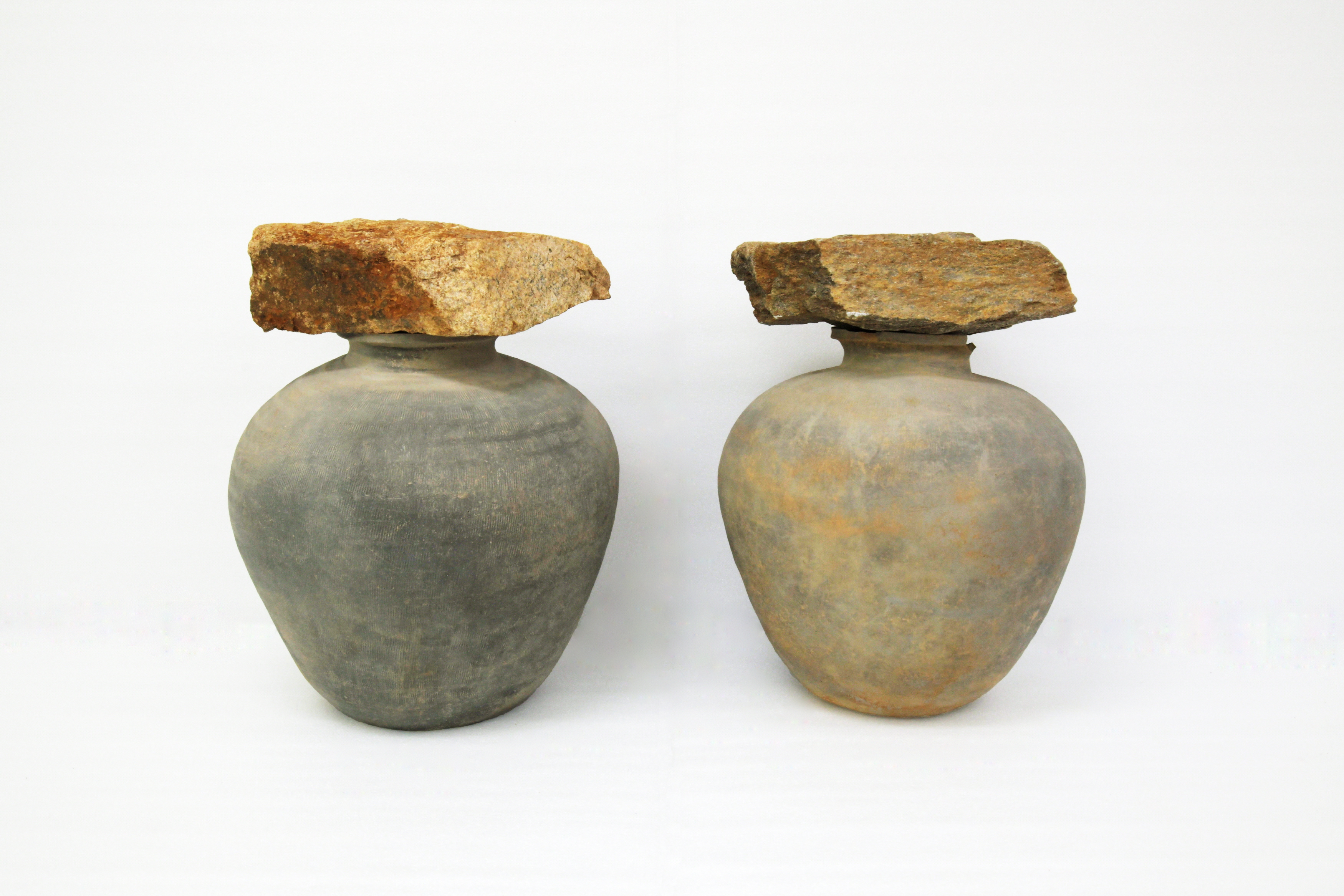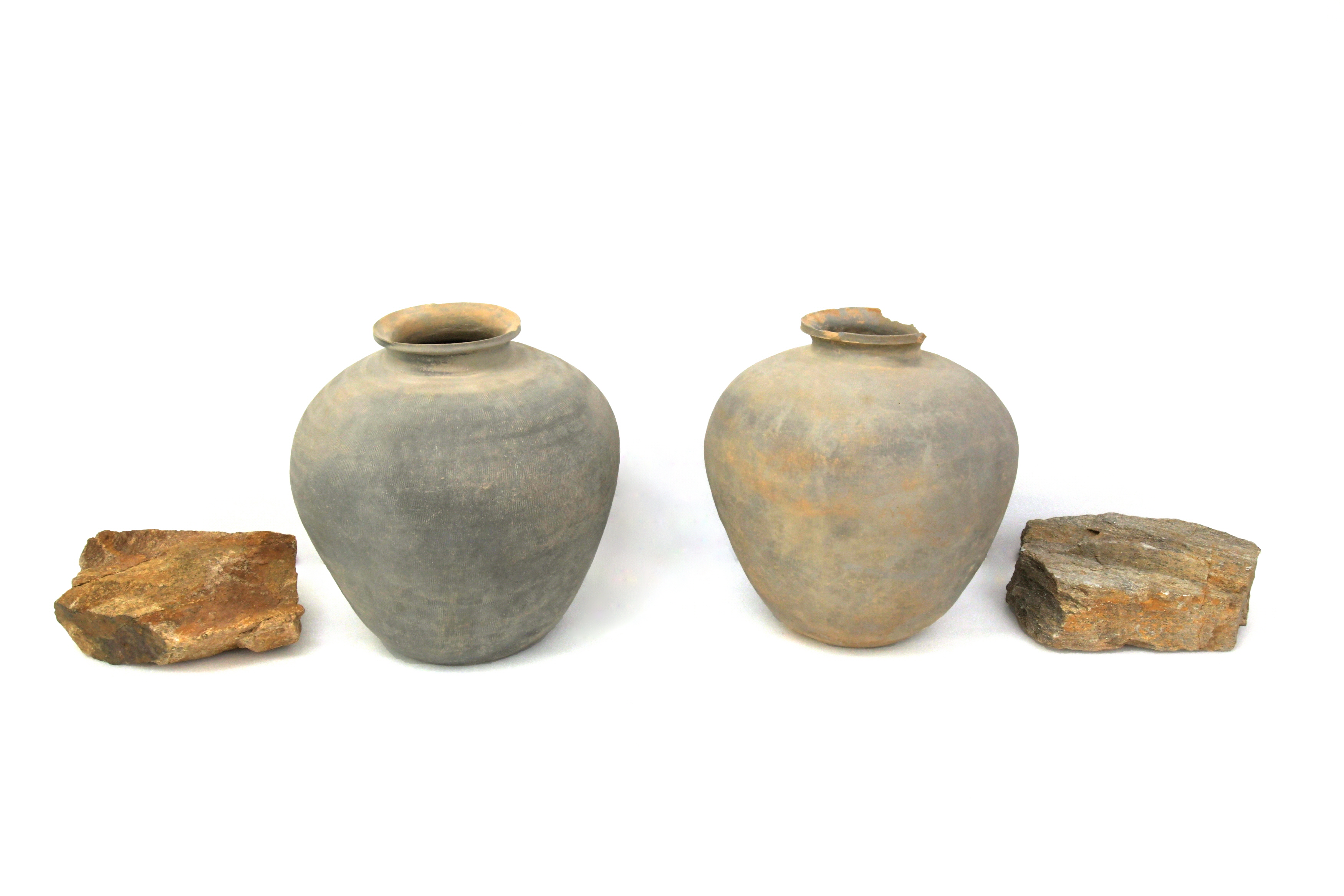Two jars with stone lid discovered at Buyeo Royal Tomb showing new evidence of funeral culture
연합뉴스 / 2022-02-23 17:02:57
Two jars with stone lid discovered at Buyeo Royal Tomb showing new evidence of funeral culture
SEOUL, Feb. 23 (Yonhap) -- Two pieces of 1,500 year-old earthenware with flat broken stones placed like lids have been excavated at the Wangneungwon, Buyeo, Chungcheongnam-do, where royal tombs from t ...
k-odyssey.com
Founded in 18 B.C. in present-day Seoul, the capital of the Republic of Korea, the Baekje dynasty lasted for 700 years until its collㅁpse in 660 A.D., mainly occupying the southwestern part of the Korean Peninsula and moving its capital several times.
Called Sabi during that period, Buyeo, Chungcheongnam-do was the last capital city for 122 years from 538 AD to the end of the dynasty. Therefore, modern historians call the dynasty Sabi-Baekje of that era after the capital.

There is a royal cemetery from the Sabi Baekje period on the southern outskirts called Buyeo Wnagneungwon.
It is known that all the royal tombs in this area were already robbed during the Japanese colonial period, and as a result of excavations at that time, almost all of their structures has been known.
The Buyeo National Research Institute of Cultural Heritage recently excavated one of the tombs to find an interesting fact related to the funeral ceremony of Baekje.

Two pieces of earthenware with flat broken stones placed like lids have been excavated. This type of burying jars has been first identified in Baekje tombs and is evaluated as an important clue to help study Baekje funeral culture and ritual process.
The institute announced on Wednesday that it had discovered jars standing upright on both sides of the floor of the main chamber through an excavation of Tomb No. 4 (Seosangchong Tomb) last year.
The jars are similar in height (49 cm) and shape. The lid stones seem to have been deliberately placed so that the contents of the jars do not escape.
The inside of the jars was filled about halfway with soil. The investigation team judged that the soil naturally flowed in after the jars were buried.
An official from the institute said, "It is not known whether the jar was buried before the tomb was built or placed in the process of putting in the coffin," adding, "After building the tomb, it seems that the tomb was dug again and the pottery was placed."

The official said, "It is known that few examples of pottery were buried in tombs like this in China," adding, "There may be meaningful results from the analysis of organic matter inside the jar, which is being analyzed by the institute.”
"It is an artifact that shows one aspect of Baekje's funeral culture, which lacks archaeological data,” said the official.
The investigation team identified the exact size and structure of the Seosangchong, which was investigated by the Japanese colonial era but had no drawings left.

There were no particularly noticeable artifacts other than two pieces of pottery.
The institute plans to investigate the Tomb No.3 (Seohachong) starting next month. In the royal tomb of Buyeo, six tombs identified during the Japanese colonial era and one tomb that appeared during the renovation process more than 50 years ago are maintained.
An official from the institute said, "We still don't know exactly who the owners are in Tomb No. 3 and No. 4,” adding, “The Tomb No. 3, located near the south of Tomb No. 4, is different in size and location from the Baekje period, and it is expected that investigation will reveal the order of tomb construction.”

'NEWS & THESIS' 카테고리의 다른 글
| 신이 된 손오공 원숭이 하누만 Hanuman, 미국 구경하고 인도로 귀환하다 (2) | 2022.02.25 |
|---|---|
| 두 손 꽁꽁 천년전 페루 미라, 저승길 혼자 갈 수 없어 떼거리 동행 (1) | 2022.02.24 |
| 扶余·王陵園で石を載せた土器2点発見…「葬儀文化研究の手掛かり」 (1) | 2022.02.23 |
| 백제 왕가의 공동묘지 판대기 덮개돌 항아리 (1) | 2022.02.23 |
| 적도 아프리카서 중남미로, 다시 남태평양으로 번진 문화재 반환 (1) | 2022.02.22 |




댓글